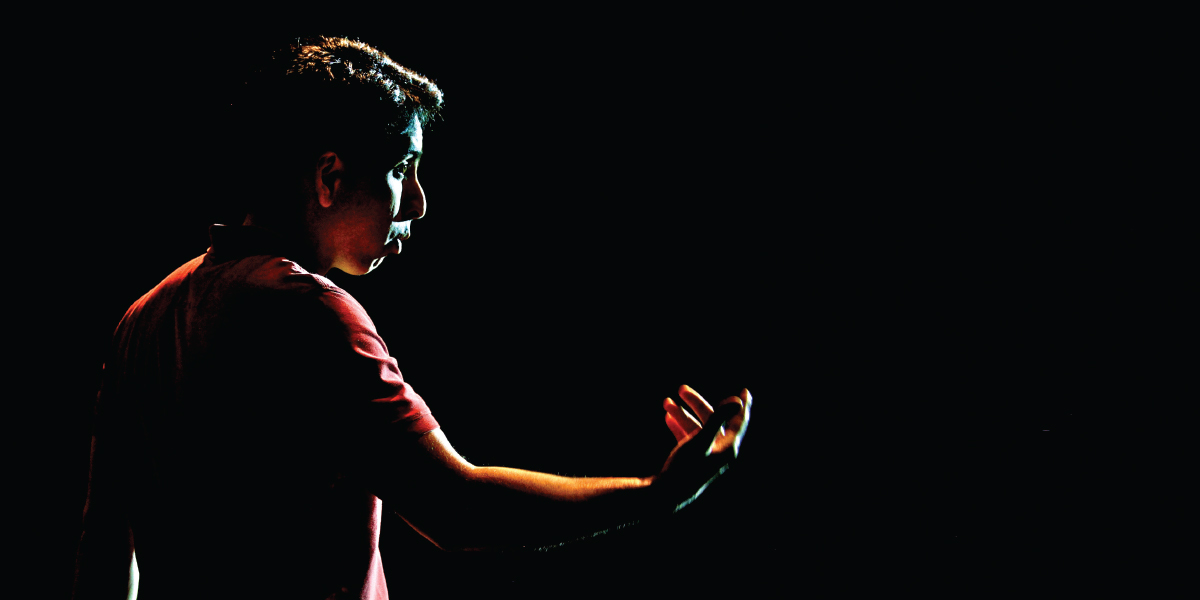When several of his young cousins requested long-distance tutoring, Salman Khan tried explaining math concepts via the telephone, then Skype. He soon discovered, however, that recording and posting short educational videos on YouTube proved the most effective. Word spread, and students around the world began accessing his free videos to learn on their own time, at their own pace, outside of their traditional classrooms.
Several years later, in 2008, Khan established Khan Academy (www.khanacademy.org). With a library of more than 4,000 videos, the nonprofit organization’s Web site attracts more than 6 million unique users per month, who complete more than 3 million practice problems and exercises per day—all for free. Pupils, as well as their parents and teachers, receive instant feedback via an online dashboard so they can easily track their progress. Khan Academy also partners with public, charter, and independent schools to test and develop best practices for delivering self-paced, personalized, and mastery-based learning at the elementary and secondary levels.
Khan, a former hedge fund analyst, is no stranger to higher education either: He holds three degrees from MIT and an MBA from Harvard Business School. Still, he believes American higher education must break through its traditional walls to implement changes that better suit the needs of students as well as society. In The One World Schoolhouse: Education Reimagined (Twelve/Hachette Book Group, 2012), for example, Khan envisions colleges and universities that feature self-paced learning opportunities, internships and apprenticeships in the business community, more research projects than lecture-based courses, ungraded seminars on art and literature, and student work portfolios in place of GPAs.
What trends do you see developing within higher education right now?
In my mind, several things will definitely happen in the next five years. One is that access to information, lessons, and even assessments will be free and available on the Web. I also believe the world will—and should—move to a competency-based model. Regardless of how you happened to learn something—whether through lectures, online tutorials, MOOCs [massive open online courses], textbooks, your own motivation—you will take rigorous assessments to show that you have the skills you claim to have. And those assessments may be taken over time, to demonstrate that you’ve retained the learning.
In a competency-based model, students pick from a menu of skills—intellectual, vocational, critical thinking, or whatever—as the goals they want to attain. The university really becomes a flexible environment, where students can jump in and out of a one-week seminar on this, a two-week seminar on that. Their motivation is learning the material because it helps achieve their goals, not just trying to impress a professor. Being able to jump in for what you want and then move on to make connections to other things has a lot of appeal. It keeps you from getting too deep and too narrow in one area or subject—unless that’s what you actually wanted to do.
With MOOCs, some colleges and universities are already making information and lessons freely available. What business model do you see emerging to support these types of classes?
My guess is that there will be a business model built around the microcredentials earned by taking the MOOC. I don’t know whether the MOOCs or independent agencies will be the ones to capture that market, but I do believe that any credible credentialing will occur in the not-for-profit space. There’s not a credible credential on the planet right now that is a for-profit credential.
The other revenue model I could imagine for MOOCs would be like the cases prepared by the Harvard Business School. The students read a case, come to class, and then have a conversation about it. Harvard has been doing this type of flipped classroom for 100 years, and pretty much every business school has adopted the same model—and pays Harvard Business School to use its cases. By making these materials and tools available to other schools that want to run more interactive classrooms, Harvard Business School makes good money.
Maybe one university has a nice MOOC on physics that another university wants to use so it can concentrate on making its educational experience all about the physical interaction with students. Right now, the students can participate in the MOOC for free. But if the MOOC provider and the professor are able to establish a strong brand, they might be able to go into that revenue space, too. Some universities are already pursuing this model.
What impact might MOOCs have on how colleges and universities operate?
Not every university has to race out and make its own MOOC. But all universities really have to think about what they can do on their own campuses to go above and beyond the free stuff, above and beyond Khan Academy, above and beyond the MOOCs.
Most distance learning, in my mind, is still very much like a traditional classroom. The professor is still looking at you, and you’re still communicating with the professor in real time. The difference with MOOCs or Khan Academy is that you can do the learning on demand and completely independently. There isn’t someone on the other side who is monitoring you or talking with you.
Any time campuses find themselves charging tuition for something that could be done at least as well, or better, on a MOOC or on Khan Academy should cause introspection. They should say, “What else can we do that’s not 300 kids in a lecture hall?” After all, that can happen on a MOOC. In fact, you get better interaction on a MOOC than in a lecture hall because you can communicate easily with the other students.
The bottom line is that universities should focus on how they can make their physical experience as valuable as possible.
So what becomes the role of the physical campus?
On a physical campus, you have access to human beings, who have conversations and make connections. And that’s the area where most of the introspection should be. Instead of universities saying, “Let’s get more virtual,” they should say, “Let’s think about how we can make more valuable use of humans when they’re in front of each other.” I would say that classes on a campus should be much more conversation-based, much more peer-to-peer, and much more project-based.
You also recommend that colleges place more emphasis on active learning through internships.
Northeastern in Boston has done this. So has the University of Waterloo, a top engineering school in Canada, which I cite in the book. Waterloo is an example of much of what I advocate: The students spend a lot of time—about 24 months—in other organizations, learning through internships and developing intellectually by working on real projects.
I don’t know what’s stopping this active learning from happening at other universities. Universities with well-established brands should be especially willing to try this out. They will find that both the professors who are involved on one side, and the employers on the other side, are happy about the paid internships. And the students have not only the intellectual and social experiences of being able to have a job, but also the economic experience.
How do you think student expectations will change? We’re already seeing students becoming increasingly more focused on what they hope to gain out of their education.
They will want an education that is much more a la carte, rather than a fixed-priced menu, so to speak. Khan Academy, for example, is a la carte: You go to the buffet and pick exactly what you want to eat.
More and more, students will expect to learn at their own pace and be able to test out of things. They will achieve their goals in different ways, in their own time. I’d argue that the students who are most successful at the universities now already have that mind-set.
What is the impact on higher education if, as you advocate, credentialing is separated from teaching and learning?
We have to become clearer about what an education is and what a credential is. A credential is a piece of paper that proves you know something, based on rigorous assessments. A college education still has value beyond that. Absolutely, college is the place where you can show evidence of collaborative or socialization or networking skills. But that aspect will be optional. Some people will find it necessary to prove they have those skills, while others might say, “Look, that’s not what I need or what the world needs of me. I just want to prove that I’m a good writer, a good thinker. And then I’m going out into the job market.” They just want the credential.
Many universities, especially those that aren’t well known outside their region or don’t have a valuable brand, will have to do that introspection we talked about earlier. They could be very good schools, but their existing credential may not stand for much in the marketplace if anyone can take a test and do as well as their graduates. Those schools really need to ask, “How do we justify the tuition we charge? How do we justify having students spend four years here?”
They will have the responsibility of proving their value to students: “Look, if you come here versus using some virtual tool, reading textbooks, or just learning on the job, you will actually perform better in these areas that you care about.” I suspect this introspection will also force schools not to require that every student go for the same amount of time—I would find it funny if every course of study were exactly four years long. I don’t think that’s going to be the case anymore. The time students will spend in school will depend on what their goals are.
How can chief business officers influence the future of higher education?
It’s all about encouraging experimentation. You’re not committing the whole university to something, and you’re not committing all of the students. Universities already do this when, for example, they offer a special program for 50 in an entering freshman class of 1,000. The 50 who want to do something different can opt into the program. Then you try some ideas, including ones you may not agree with, and figure out what’s working and what’s not working.
That’s how we operate at Khan Academy: Even if people disagree on an idea, if it seems like it might have merit and not be irresponsible, we try it out.
Experimentation—and being OK with some ideas not working out—is a very different model for universities steeped in tradition. What advice do you have for being more entrepreneurial in academia?
You know, every university on the planet now has an engineering school. But in 1860, no universities did. And then MIT came into existence. It took William Barton Rogers saying, “I think we should attract the same type of students who might go to a Harvard or Yale, really strong students, to become leaders in this new revolution around technology, manufacturing, and science.” Suddenly, you had the first engineering school.
It didn’t take long for people to recognize how valuable the education at MIT was. They probably saw how in demand those students were in the job market. They probably saw that the MIT students who studied how to optimize a steam engine were just as intellectually prepared as, say, students at Harvard who were studying philosophy. Pretty much every university eventually opened an engineering department, even though most of them would have said years earlier that teaching engineering wasn’t what they were all about.
In the next five years, I think we’re in for another wave of that type of change. There’s definitely an opening for something new. It might happen within some of the more forward-thinking universities, or a completely new type of institution may develop.
KLARA JELINKOVA is associate vice president and chief information technology officer at the University of Chicago.




